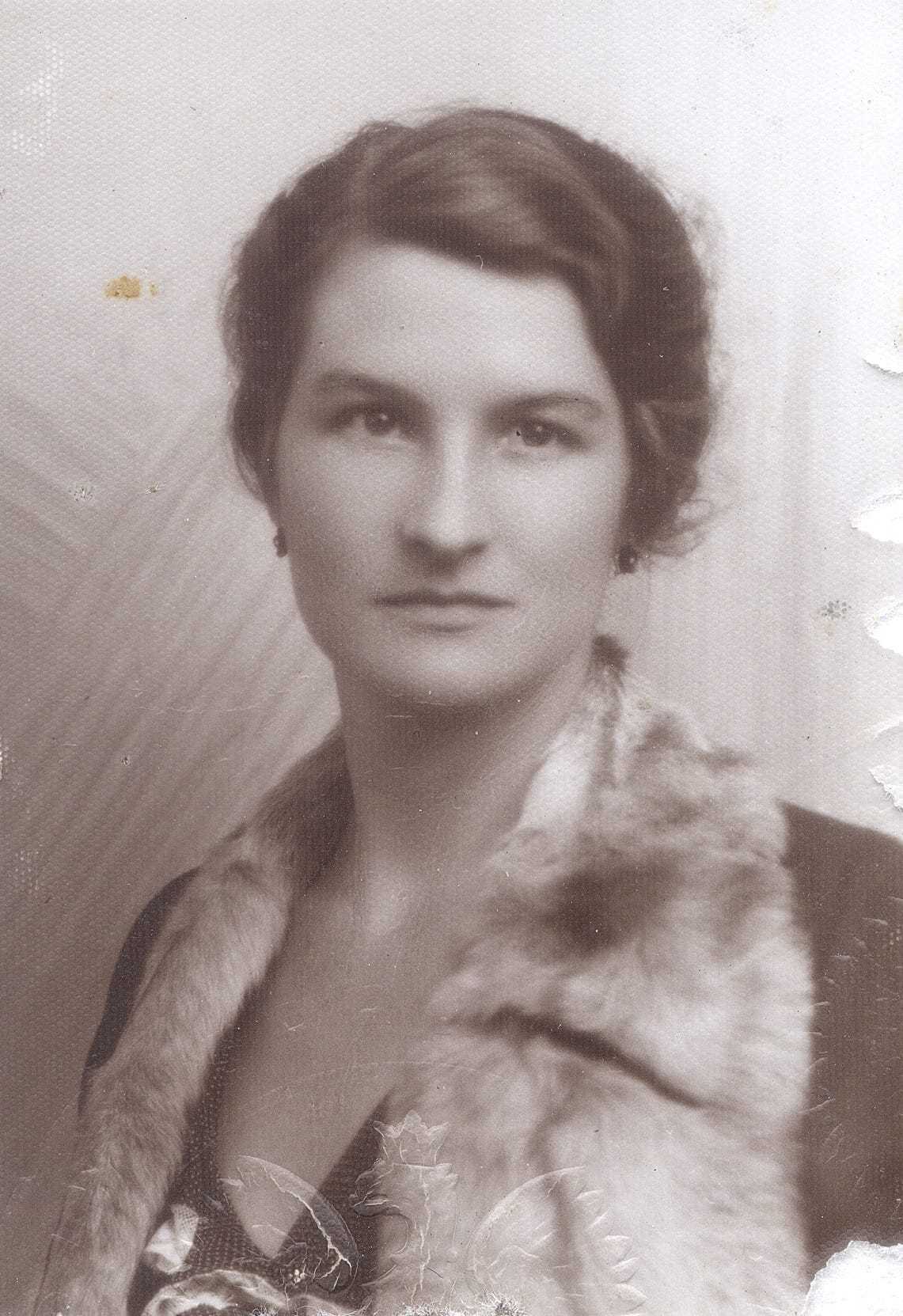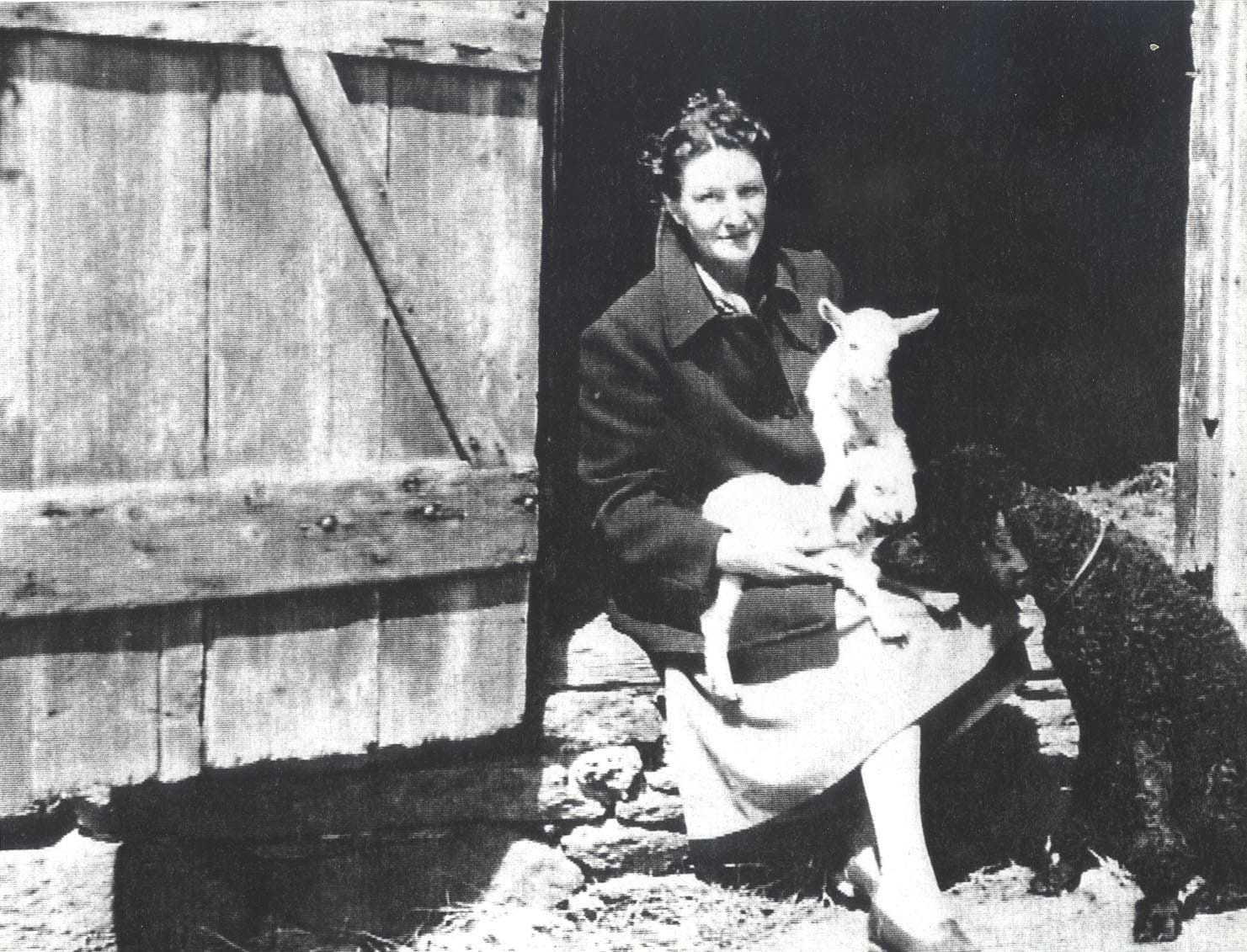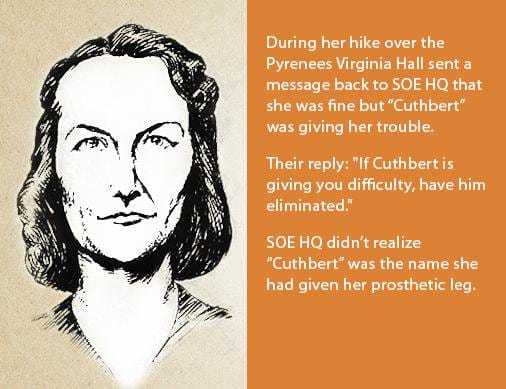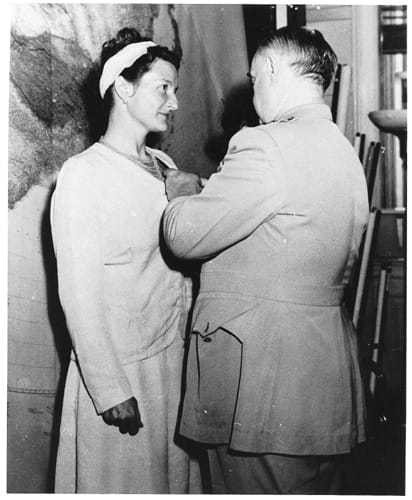“Miss Hall displayed rare courage, perseverance and ingenuity; her efforts contributed materially to the successful operations of the Resistance Forces in support of the Allied Expeditionary Forces in the liberation of France.”
Citation for Distinguished Service Cross awarded to Virginia Hall, 1945
President Harry Truman
Her life reads like a spy novel. From overcoming the loss of her leg to working clandestinely behind enemy lines for the Office of Strategic Services (OSS), she’s a true American hero.
Who is this brave woman? Some knew her as “Marie Monin,” “Germaine,” “Diane,” “Camille,” and even “Nicolas,” but we know her as Virginia Hall.
During WWII, Virginia organized agent networks, assisted escaped prisoners of war, and recruited French men and women to run safe houses—staying one step ahead of the Gestapo, who wanted desperately to apprehend “The Limping Lady.”
For her courage and ingenuity, she was awarded the Distinguished Service Cross—the only civilian woman to be so honored.
Virginia then went on to become one of only a handful of senior women in CIA’s clandestine service until her mandatory retirement in 1966 at the age of 60. And she did it all despite having a prosthetic leg, which she named Cuthbert.

A Sense of Adventure
Virginia Hall Goillot was born in Baltimore, Maryland. As a young woman who had a gift for languages and a sense of adventure, Virginia wanted to join the foreign service.
After attending Radcliffe and Barnard and pursuing additional studies in Europe, she signed on as a clerk at the US Embassy in Warsaw.

Her next assignment took her to Izmir, Turkey. There she suffered a serious hunting accident and lost her left leg below the knee.
The 27-year-old didn’t let that slow her down, however.
Fitted with a wooden leg, she went back to work—this time at the consulate in Venice.
While there, she asked to take the oral exam for the foreign service only to be informed that the loss of her leg was cause for rejection and that her dream of becoming a diplomat was over.
The outbreak of World War II found Virginia in France. She quickly joined the ambulance corps.
After the fall of France, she made her way through Spain and then to England, where she eventually volunteered to serve with the British Special Operations Executive (SOE). SOE trained her in weapons, communications, security, and resistance activities.
During the next few years, she would become legendary for her exploits, first with SOE and then with the OSS.

A Legendary Intelligence Officer
Virginia organized agent networks, assisted escaped prisoners of war, and recruited French men and women to run safe houses—staying one step ahead of the Gestapo, who wanted desperately to apprehend “The Limping Lady.”
For her courage and ingenuity, she was awarded the Distinguished Service Cross—the only civilian woman to be so honored.

Virginia Hall being awarded the Distinguished Service Cross.
After the war, the 40-year-old Virginia was eager to remain in the intelligence business.
Because she spoke Italian fluently, she was dispatched to Venice, where for several years she collected and transmitted economic, financial, and political intelligence with special emphasis on the Communist movement and its leaders.
She then worked for the National Committee for a Free Europe (NCFE), a CIA front organization associated with Radio Free Europe.
She officially began her CIA career on December 3, 1951.
For the next 15 years, she used her covert action expertise in a wide range of Agency activities, chiefly in support of resistance groups in Iron Curtain countries.
The Debrief: Behind the Artifact - Virginia Hall
The CIA has officers whose stories sound more like they’re from a superhero movie, but here at CIA we have a saying, we’re just ordinary people doing extraordinary things.
[MUSIC]
One of our officers who did extraordinary things was Virginia Hall, the most highly decorated female civilian of World War II. This Distinguished Service Cross right here is how she got that distinction. Hall was born in Maryland but while in London she was recruited by the SOE, the Special Operations Executive, which was essentially the same as the OSS here in the United States. They sent her over undercover as an American journalist and she went into France to try to set up assets and informants and get information. She also helped down pilots get out of France and back to the UK.
She unfortunately became one of the most wanted people in all of France and so she had to escape, she hiked through the Pyrenees and into Spain. Once in Spain she was unfortunately arrested, but as soon as she was freed she went back to the SOE and asked to return to France to do more work. They said this was far too dangerous and so she quit and she joined the OSS here in the United States.
We sent her in, but we didn’t send her in as just Virginia Hall knowing that she was wanted. We sent her in disguise as an old woman. Hall spoke French and German fluently, so while over there she was able to listen in on the Nazi’s plans. She also would scout locations for major drops, things like supplies and personnel. She scouted locations for sabotage missions, so blowing up railroad tracks and roads to cut off the Nazi supplies. She also had over fifteen hundred French resistance forces fighting under her leadership and most importantly she sent radio transmissions which was one of the most dangerous things you could do in France at the time.
She did all of these extraordinary things, while being a woman and having a prosthetic leg.
[MUSIC]

